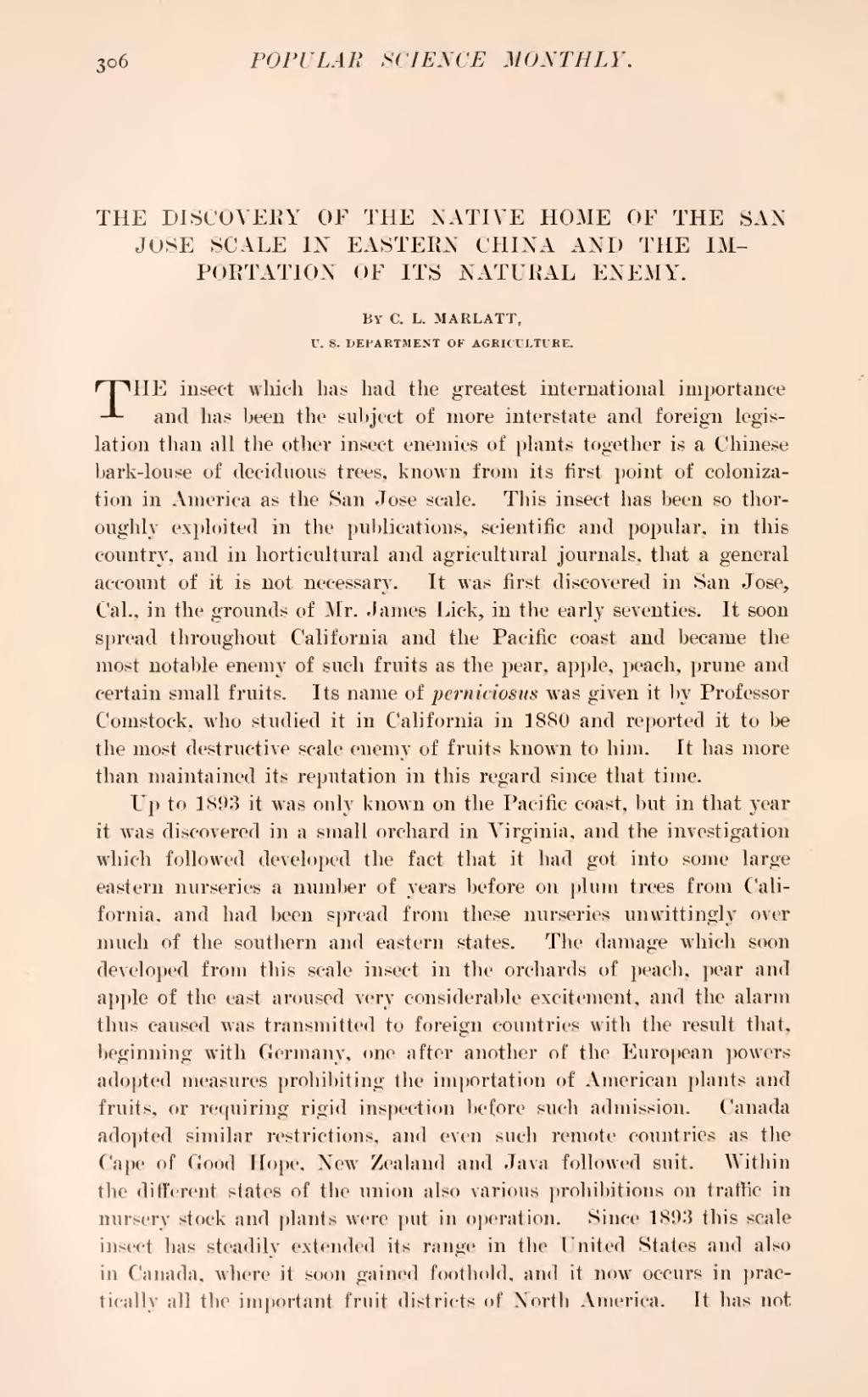| THE DISCOVERY OF THE NATIVE HOME OF THE SAN JOSE SCALE IN EASTERN CHINA AND THE IMPORTATION OF ITS NATURAL ENEMY. |
By C. L. MARLATT,
U. S. DEPARTMENT OF AGRICULTURE.
THE insect which has had the greatest international importance and has been the subject of more interstate and foreign legislation than all the other insect enemies of plants together is a Chinese bark-louse of deciduous trees, known from its first point of colonization in America as the San Jose scale. This insect has been so thoroughly exploited in the publications, scientific and popular, in this country, and in horticultural and agricultural journals, that a general account of it is not necessary. It was first discovered in San Jose, Cal., in the grounds of Mr. James Lick, in the early seventies. It soon spread throughout California and the Pacific coast and became the most notable enemy of such fruits as the pear, apple, peach, prune and certain small fruits. Its name of perniciosus was given it by Professor Comstock, who studied it in California in 1880 and reported it to be the most destructive scale enemy of fruits known to him. It has more than maintained its reputation in this regard since that time.
Up to 1893 it was only known on the Pacific coast, but in that year it was discovered in a small orchard in Virginia, and the investigation which followed developed the fact that it had got into some large eastern nurseries a number of years before on plum trees from California, and had been spread from these nurseries unwittingly over much of the southern and eastern states. The damage which soon developed from this scale insect in the orchards of peach, pear and apple of the east aroused very considerable excitement, and the alarm thus caused was transmitted to foreign countries with the result that, beginning with Germany, one after another of the European powers adopted measures prohibiting the importation of American plants and fruits, or requiring rigid inspection before such admission. Canada adopted similar restrictions, and even such remote countries as the Cape of Good Hope, New Zealand and Java followed suit. Within the different states of the union also various prohibitions on traffic in nursery stock and plants were put in operation. Since 1893 this scale insect has steadily extended its range in the United States and also in Canada, where it soon gained foothold, and it now occurs in practically all the important fruit districts of North America. It has not
